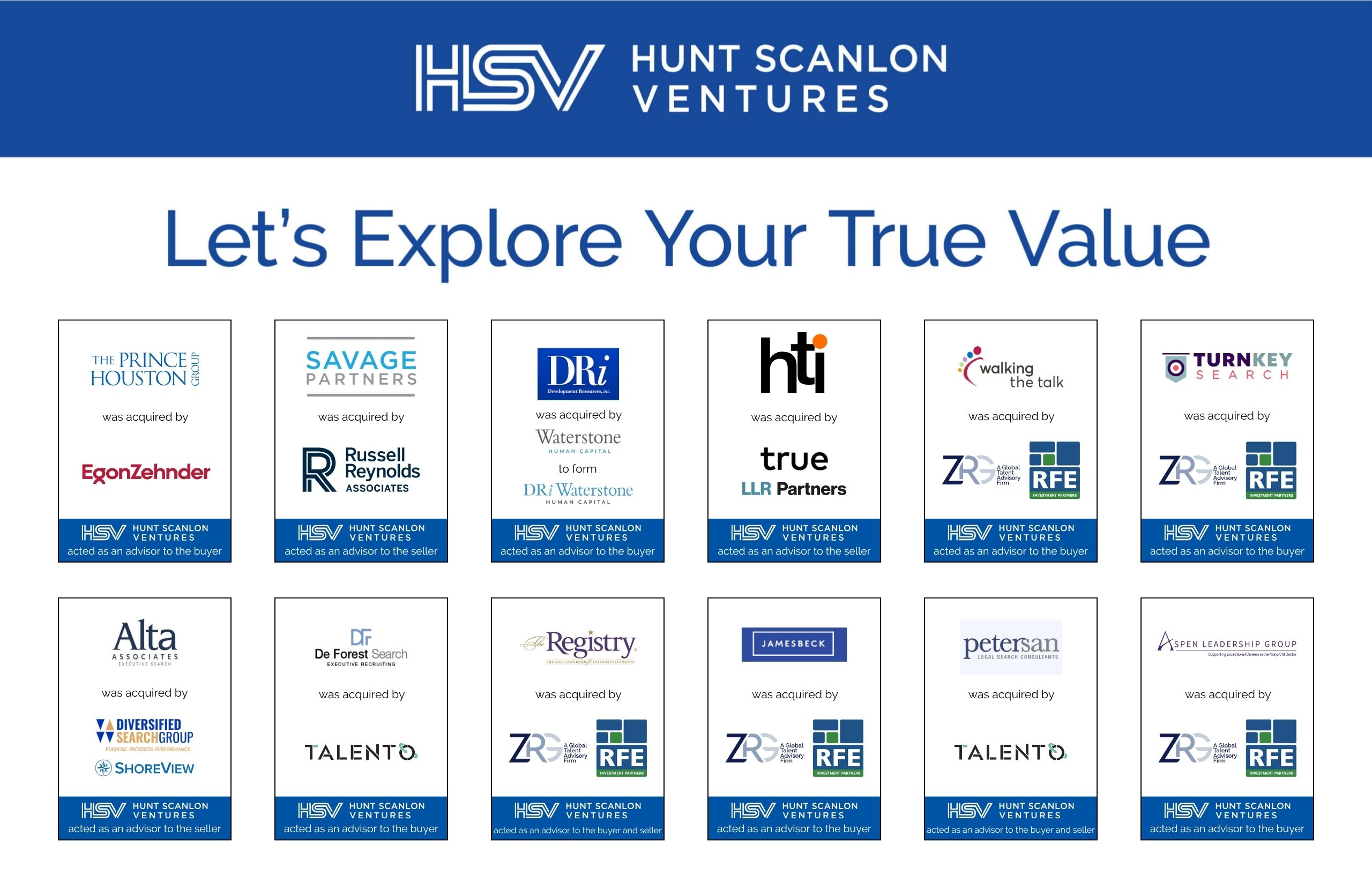Talent is frequently cited as critical to deal success, but all too often it is excluded from the strategy driving the deal in the first place. As acquirers push for long-term value creation, human capital is emerging as the missing link between the deal thesis and real results. Evan Berta, an associate at Hunt Scanlon Ventures, explores how leadership alignment is becoming central to post-close performance.
Dealmakers say people matter. But when it comes to execution, most still overlook human capital where it counts.
That is the main finding from The Say Versus Do Divide in M&A, a 2025 report from Mercer and the Transaction Advisors Institute. The study, based on insights from corporate development and HR leaders involved in more than 1,200 transactions annually, explores the disconnect between how companies value talent in theory, and how little it shows up in actual deal design.
According to the report, “most corporate acquirers say both that human capital is critical to delivering value with M&A and that it’s a value creation driver (91%), yet fewer than half (46%) consider human capital attributes when targeting assets or developing deal theses.”
Despite the rhetoric, only 10% of companies include people’s considerations in their initial targeting criteria, and just 30% incorporate them into the deal thesis itself.
The result is a persistent say-do divide that continues to erode synergy realization post-close.
Human Capital Integration
While onboarding practices have improved over the past decade, Mercer finds that attention is still disproportionately focused on Day 1. “Focus on HR activities is up from 5-10 years ago and the initial integration periods are smoother than before because of focused attention on Day 1 readiness,” the report noted.
But that progress has not translated into better long-term outcomes.
A shift is underway: 73% of acquirers now say they build human capital integration plans that extend well beyond the first 100 days, and 81% have assigned named owners to oversee longer-term synergy milestones.
Mercer concludes that “priorities have shifted from the initial integration period to delivering the deal thesis over the appropriate timeframe.”
“What drives long-term deal value isn’t a clean payroll transition, but whether the leadership team is empowered to execute the growth plan.”
“Too many firms treat onboarding as the finish line instead of the starting gate,” said Evan Berta, an associate at Hunt Scanlon Ventures. “What drives long-term deal value isn’t a clean payroll transition, but whether the leadership team is empowered to execute the growth plan.”
For executive search and human capital firms, this marks a growing opportunity to play a deeper, more strategic role.
Instead of focusing solely on closing leadership gaps during onboarding, search partners can now support the broader alignment of structure, incentives, and culture to the underlying deal strategy.
Tactical Overload Blocks Strategic Execution
One of the report’s most pointed insights is that M&A teams remain too consumed by short-term tactical tasks.
“The vast majority of the hours spent during the period from diligence through to close is used on essential but tactical components…not the activities that lead to decreased risk of not delivering the deal thesis,” the report said.
While 98% of acquirers review human capital assumptions before signing, most reviews focus on contracts, compensation mapping, and system integration, not leadership capability, succession planning, or team cohesion.
“Great integration isn’t about doing everything; it is about doing the right things to unlock talent.”
Mercer flags this imbalance as a critical execution risk: poor Day 1 experiences, like payroll errors or misaligned titles, can derail performance and distract from long-term integration goals.
“It might be time we stop confusing tactical hygiene with strategic alignment,” Mr. Berta said. “Great integration isn’t about doing everything; it is about doing the right things to unlock talent.”
This creates an opening for human capital advisors to add real value. By supporting pre-close strategy with leadership assessments, culture compatibility analysis, and long-term incentive design, talent firms can help clients shift from tactical firefighting to synergy enablement.
Most acquirers know they need to do better. More than 90% of those surveyed say they’ve taken steps to improve their human capital approach in M&A, and 77% now include HR-related lessons in post-mortems.
Mercer’s report finds that “acquirers are not satisfied with how human capital has been managed in the past and want to do better.”
Making Talent Central to the Deal
Companies are experimenting with new tools and techniques, from assigning mentor teams to acquired employees to building culture assessment models. But even as best practices evolve, one area still lags behind: AI. Mercer writes that “very few acquirers regularly use AI in their human capital-related M&A processes,” and two-thirds have yet to explore its potential.
That leaves room for talent firms with AI-enhanced search, onboarding, and engagement solutions to differentiate. As clients grow more sophisticated in their deal planning, they’ll expect human capital partners to bring more than just candidates; they’ll want insight, speed, and alignment with the broader value thesis.
Mercer’s and Transaction Advisors Institute’ findings are clear: talent is still the under-leveraged variable in M&A. Deals fail not because the logic is flawed, but because execution falls short, and people are too often an afterthought.
But as integration timelines stretch, synergy horizons lengthen, and leadership needs grow more complex, the firms that treat talent as central to the deal, not as an afterthought, will be the ones delivering real results..
Article By

Evan Berta
Evan Berta is an Associate at Hunt Scanlon Ventures, specializing in data analysis, market mapping, and target list preparation. He plays a critical role in identifying and building out groups of firms in sectors of interest, including preparing strategic overviews of top potential targets for acquisitions. Evan’s analytical expertise supports the firm’s sourcing initiatives, particularly in identifying niche and emerging market opportunities, and delivering actionable insights on tight timelines.






